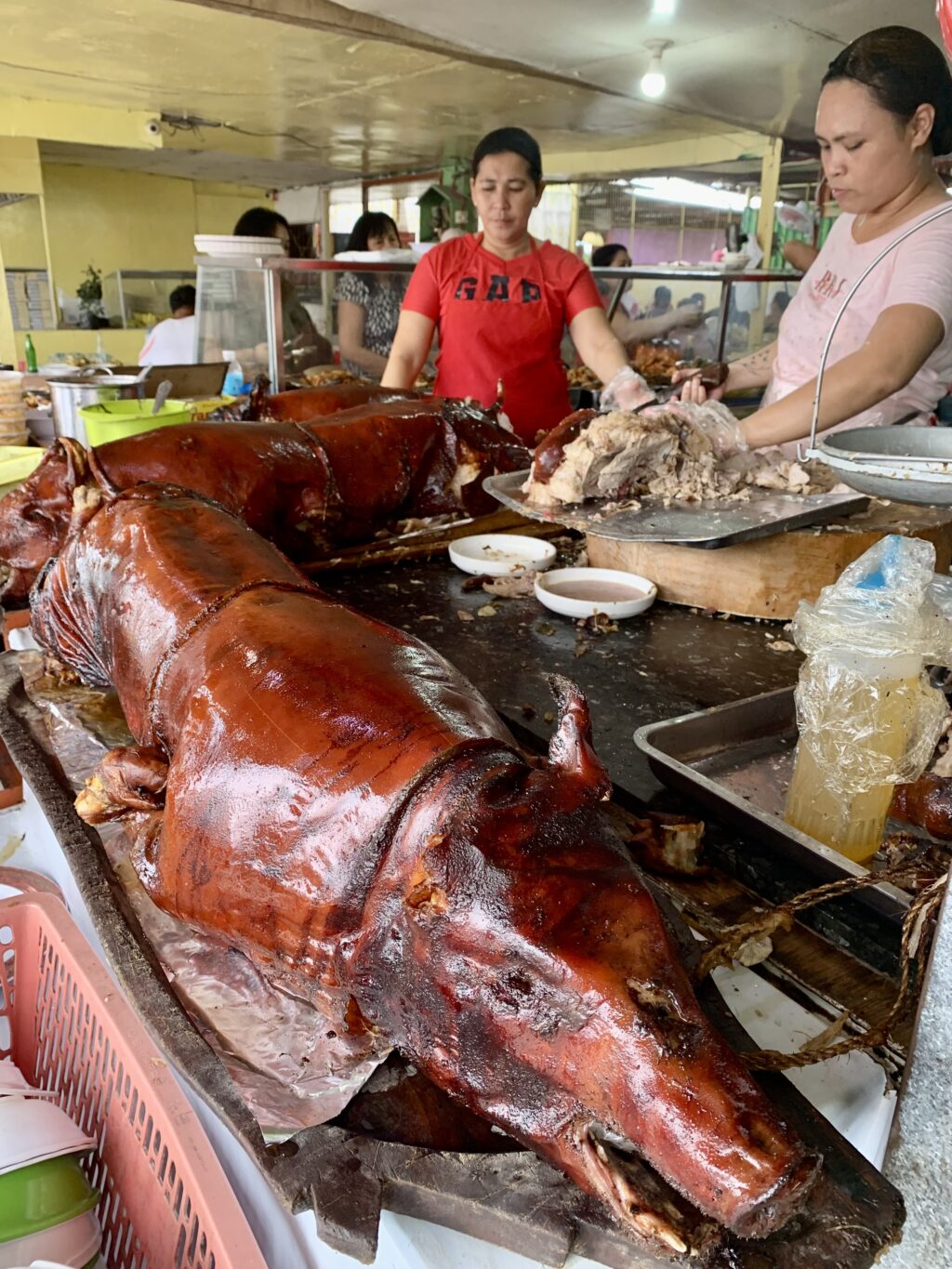
Carcar lechon. CDN Digital photo | Brian J. Ochoa
MANILA, Philippines — Health Secretary Teodoro Herbosa on Tuesday warned of the health risks the holiday cheer may bring to Filipinos like strokes and heart attacks.
Herbosa added that the country remains burdened, not only by infectious diseases but more so by “lifestyle diseases,” as he put it.
Urging the public to make “healthy choices” this Christmas season, Herbosa noted that the top illnesses among Filipinos are still heart disease, stroke, cancer, and diabetes.
“COVID[-19] is getting high, but during the holiday season, heart attacks, diabetes, and strokes happen as well,” the health chief said in an interview with ANC.
“I think it’s about health choices during the [Christmas] season,” he added.
Herbosa also earlier advised the public to refrain from “ma” food — which he said stood for “mataba, matamis, maalat” or those that are fatty, sugary, and salty — because these may heighten the risk of hypertension, cholesterol, and diabetes.
‘Financial hardship’
Based on the latest figures from the Philippine Statistics Authority released in November, ischemic heart disease, neoplasms, and cerebrovascular diseases were the top three causes of death nationwide from January to May this year.
Also known as coronary heart disease, ischemic heart disease, or a weakened heart due to restricted blood flow to the organ, accounted for 19.3 percent of all reported deaths in the country during that period.
READ: Heart disease – Not just a man’s problem
Neoplasms, or tumors, made up 10.4 percent of fatalities, while cerebrovascular illnesses such as stroke accounted for 10.3 percent of deaths.
These illnesses were followed by diabetes (6.2 percent) and pneumonia (5.8 percent). All are noncommunicable diseases (NCDs) except for pneumonia, which is caused by pathogens.
READ: Fighting for breath: Pneumonia continues to kill children worldwide
In a forum last week by the World Health Organization (WHO), Dr. Eric Domingo, WHO coordinator in the Western Pacific region for the management of NCDs, pointed out that “it is harder to address NCDs compared to other diseases.”
“Most governments, when you look at their budgets for health, it’s usually for infectious diseases and emergencies,” he told reporters. “That’s why when people get sick of NCDs and get catastrophic illnesses, like heart attack, 70 percent of people in our region go into financial hardship, they go into poverty.”
‘Designed to treat’
Based on WHO data, 80 percent of NCD deaths worldwide occur in low-income and middle-income countries, where “preexisting disease burdens are exacerbated by poverty and resource constraints.”
The lack of funding and manpower remains a persistent challenge. Domingo noted that these resources would otherwise enable developing nations like the Philippines to focus on NCDs.
Instead, the healthcare system in these areas are “designed to treat, not prevent” illnesses, he said.
READ: Life after stroke: Survivors support other survivors to get back on track
Among the sustainable development goals set by the WHO is for countries to reduce, by a third of their present figures, premature mortality from NCDs—through “prevention and treatment and promotion of mental health and well-being,” Domingo said.
But in the Western Pacific, only New Zealand, South Korea and Singapore—all rich countries—are on track to meet that target, he said.
Prevention of NCDs, Domingo said, “improves only when you [live in] countries that screen better, treat better, and give maintenance medications.”
